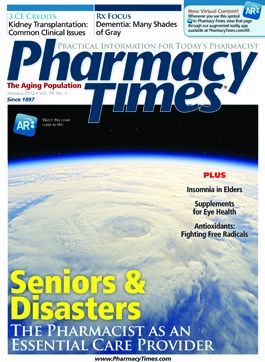Publication
Article
Pharmacy Times
ActHIB Component of 2-Vial Pentacel is Repeatedly Missed
Author(s):
This childhood vaccine given as 1 shot requires mixing of 2 components, leading to omission errors.
This childhood vaccine given as 1 shot requires mixing of 2 components, leading to omission errors.
Pentacel is a multicomponent vaccine for active immunization against diphtheria, tetanus, pertussis, poliomyelitis, and invasive disease due to
Haemophilus influenzae
type b. It is for use in children 6 weeks through 4 years of age and provides the convenience of multiple vaccines in 1 shot.
It is a 2-vial vaccine product, however, that requires mixing of the 2 components before administration to children (Figure). The vaccine is available in a 5-dose carton containing diphtheria and tetanus toxoids, acellular pertussis adsorbed, inactivated poliovirus (DTaP-IPV) liquid component vials (blue-capped vial) used to reconstitute each single-dose vial of the lyophilized H influenzae type b vaccine (ActHIB) component (green-capped vial).
A Common, Preventable Error
Again and again, The Institute for Safe Medication Practices (ISMP) has received reports involving children who must return to their doctor’s office with their parents in order to receive the inadvertently omitted H influenzae type b component, with some cases involving numerous patients.
In 1 case, only 1 component of the vaccine product, the DTaP/IPV portion, was administered to the child, not the Hib (Haemophilus b conjugate) portion. The provider later continued the series and the child did not experience any harm. The error was discovered during an inventory of the vaccines. In another case, a nurse checking inventory opened a carton and found an extra green-capped vial. It was later learned that another nurse failed to use the DTaP-IPV component to dilute the ActHIB in the other vial.
One reason these errors may occur is that the DTaP/IPV component carries the brand name Pentacel, whereas the Hib component is labeled ActHIB, a totally different brand name. Unless the person administering the vaccine is familiar with the product and takes the time to read the labeling, which indicates the 2 must be mixed, the person could easily think the vial labeled Pentacel is all that is needed. ISMP contacted the company and the FDA about this and also suggested enhancing the labeling to call attention to the need to mix the 2 components.
Safe Practice Recommendations
One report submitted to ISMP indicated that the clinic is now keeping the vials of the DTaP-IPV liquid component (blue-capped vial) and ActHIB component (green-capped vial) together using a rubber band to avoid this mistake in the future.
Pharmacies, clinics, and physician offices might want to consider this or another process to keep the vials together (eg, placing the 2 vials in a zipper closure bag) and the use of an auxiliary label for the carton to remind staff to use both vials.
To confirm administration of both components, staff should also make sure the NDC number for each vial has been documented in the vaccine log before administration. Documenting the actual administration of the vaccine should always occur after it is given.
ISMP has launched its third national patient safety reporting program, the ISMP National Vaccine Errors Reporting Program (ISMP VERP). ISMP VERP (http://verp.ismp.org) captures the unique causes and consequences of vaccine-related errors. The program was designed with the assistance of the California Department of Public Health.
As with all ISMP reporting programs, reporter information is confidential. Reports submitted to ISMP VERP will be shared with the FDA and the Centers for Disease Control and Prevention. They also will be forwarded to the vaccine manufacturer when applicable. Please share reports of vaccine-related errors, in confidence, with ISMP.
Dr. Gaunt is a medication safety analyst and the editor of ISMP Medication Safety Alert! Community/ Ambulatory Care Edition.







